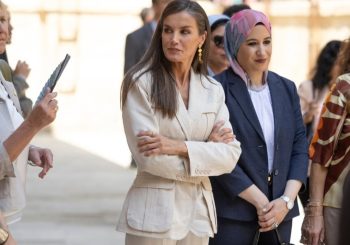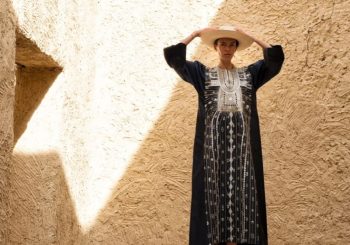It is a Saturday morning in the 1920s: errands are run just in time to make your way to Sednaoui El-Khazendar, Egypt’s once-iconic department store.
The Sednaoui El-Khazendar building sits gloriously in the al-Mosky district, one of Cairo’s oldest quarters. Established in 1913 by the Sednaoui brothers, Selim and Samaan, it is considered the “first mall in the Middle East.”
Khedive Ismail’s Cairo was vibrant with European flair; under his rule, Cairo underwent transformations that reflected the grandeur of Europe’s architecture. He hired engineers from France, Italy, and Germany to complete his visions of a Westernized Egypt.
Ismail dreamed of converting Cairo to “Paris of the East,” and years later, the Sednaoui brothers embraced his visions, replicating France’s iconic department store, Galeries Lafayette.
The building started off as a small shop in the al-Azhar area, but the two brothers decided to expand it into a larger building. They called it after their family name Sednaoui, and its location was in El-Khazendar square, landing it Sednaoui El-Khazendar.

It was designed by famous French architect, George Parcq, who also designed the Alexandria Opera House and the Cairo Stock Exchange. Parcq’s marvelous architectural design of the building led it to be registered as a “building of distinct value.” One of the most beautiful buildings of the 20th century, with stone masonry lining its outer walls and a spacious courtyard, it consisted of a basement, a ground floor, and three additional floors.
After it opened in 1913, the store branched out to Alexandria, Mansoura, Tanta, and other governorates until it reached 72 branches by 1961. Sednaoui El-Khazendar, however, was nationalized after the 1952 revolution, and all of its branches were owned by the public sector – shifting from “lavish and glamorous to economic and convenient.” It was also exposed to the infamous Cairo Fire in 1952 which had ravaged the city, burningd other buildings.
Although the initial Sednaoui El-Khazendar stood as a testament to Egypt’s rich history and architectural splendor of the 19th and 20th century cosmopolitan Cairo, it was overshadowed by the prolific existence of street vendors who surrounded the building, contributing to a chaotic setting.
Neglect, misuse, and lack of maintenance defined Sednaoui El-Khazendar in recent years, although many attempts sought to rehabilitate the building. A project by the Holding Company for Tourism, Hotels, and Cinema and the National Organization for Urban Harmony was launched in an attempt to reuse the structure as a cultural commercial center. Though its state-of-the-art nature is hard to duplicate, the mission stands to go back to the roots of an era that once allowed Egyptian architecture to stand in close comparison with international masterpieces.






Comments (0)